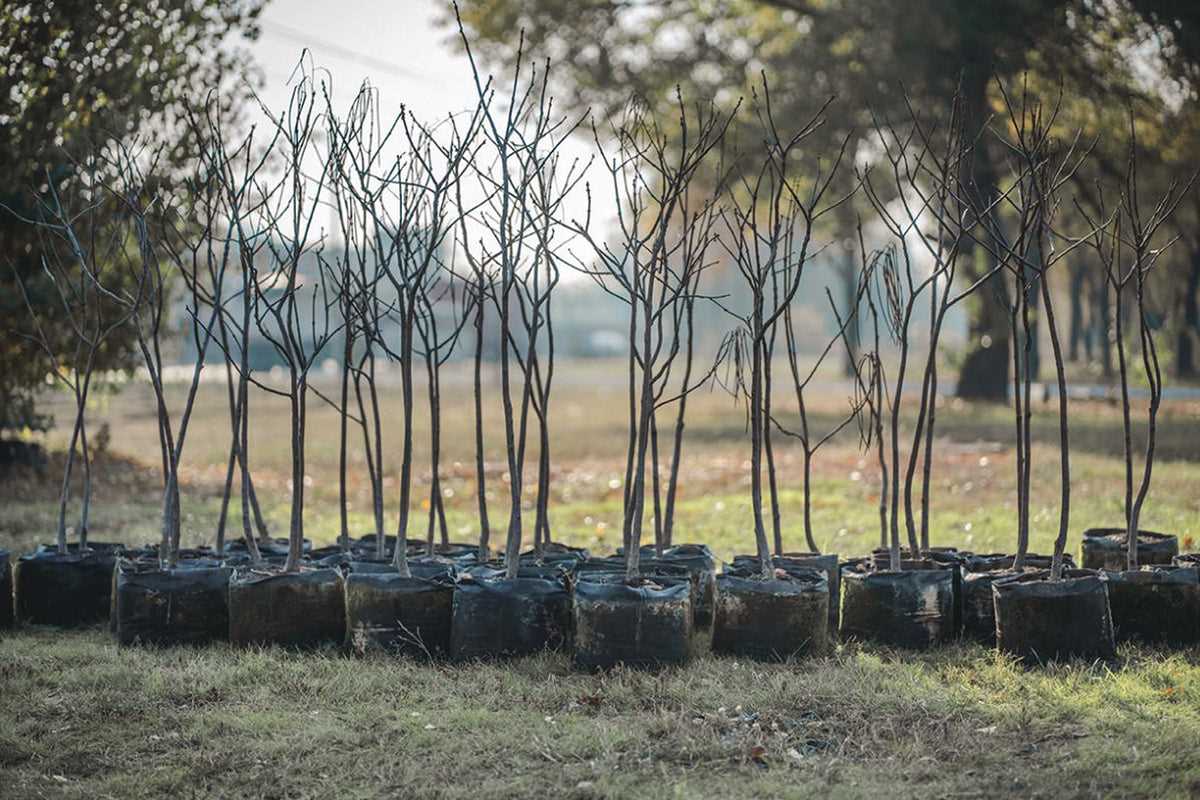- Pre-winter Watering: Importance and Benefits
- Introduction
- The Importance of Pre-winter Watering
- The Benefits of Pre-winter Watering
- When and How to Water
- Conclusion
- Preparing Trees for Winter
- 1. Mulching
- 2. Proper Pruning
- 3. Watering
- 4. Protecting from Freezing Temperatures
- 5. Pest Control
- 6. Monitoring and Care
- Understanding Autumn Rainfall
- Factors Affecting Autumn Rainfall
- Significance for Tree Watering
- Watering Needs of Trees
- 1. Age of the Tree
- 2. Species of the Tree
- 3. Soil Type and Drainage
- 4. Weather Conditions
- 5. Signs of Water Stress
- Assessing Soil Moisture
- Methods of Assessing Soil Moisture
- Considerations for Pre-Winter Watering
- Conclusion
- The Role of Rainfall in Tree Health
- Factors to Consider
- The Risk of Drought Stress
- Effects of Drought Stress
- Preventing Drought Stress
- Tips for Effective Pre-winter Watering
- Question-answer:
- Is it necessary to water trees in the pre-winter season?
- What is the purpose of pre-winter watering for trees?
- What happens if trees don’t receive enough water in the pre-winter season?
- Does rainfall during autumn eliminate the need for pre-winter watering?
- How often should trees be watered in the pre-winter season?
- Video: The Importance of Watering Trees Before Winter Hits
The transition from autumn to winter brings with it a shift in weather patterns, with rainfall becoming more sporadic and temperatures dropping. As nature begins its preparation for the colder months ahead, one may wonder if it is still necessary to provide additional watering to trees, especially if there has been rainfall during the autumn season.
While autumn rainfall can certainly help trees replenish their moisture levels, it is not always sufficient to sustain them throughout the winter. Factors such as the type of tree, the soil condition, and the amount of rainfall received can all influence the tree’s water requirements. Therefore, it is essential to assess each tree’s individual needs before deciding whether or not to provide supplemental watering.
One key consideration is the tree’s root system. In the autumn, trees start preparing themselves for the winter by redirecting their energy towards their roots. As the soil temperature decreases, roots become less active, making it harder for them to absorb water. This, combined with the reduced availability of water due to decreased rainfall, can lead to dehydration and stress in trees.
Additionally, certain tree species have higher water demands than others, and their ability to tolerate dry conditions can vary. Trees native to arid regions, for example, may have adapted to survive with limited water and not require additional watering. On the other hand, trees that are not well-suited to dry conditions or have shallow root systems may benefit from extra watering, even if rainfall occurred during the autumn.
In conclusion, while autumn rainfall can contribute to a tree’s water needs, it may not be sufficient to sustain them throughout the winter. Factors such as tree type, soil condition, and root system play a crucial role in determining whether additional watering is necessary. Therefore, it is important to evaluate each tree individually and provide supplemental watering if needed to ensure their health and vitality during the winter months.
Pre-winter Watering: Importance and Benefits
Introduction
As winter approaches, it is important to ensure that trees receive adequate water before the ground freezes. While autumn rainfall may provide some moisture for trees, it may not be sufficient to meet their needs leading up to the dormant season. This article explores the importance of pre-winter watering and the benefits it provides to ensure the health and vitality of trees.
The Importance of Pre-winter Watering

Pre-winter watering is crucial for tree health for several reasons:
- Moisture for Winter: Trees require sufficient moisture to withstand the harsh winter conditions. Pre-winter watering helps trees establish a reserve of water that they can draw upon during the dormant period.
- Protection from Drought Stress: Even though trees are dormant during winter, they can still be affected by drought stress. Pre-winter watering helps prevent this stress by ensuring that trees have adequate hydration before the ground freezes.
- Root Development: Watering trees before winter helps promote root development. Moist soil encourages roots to grow, enabling trees to better anchor themselves and absorb nutrients when the growing season resumes.
The Benefits of Pre-winter Watering
Pre-winter watering offers several benefits that contribute to the overall health and vitality of trees:
- Increased Cold Tolerance: Adequate moisture levels help increase a tree’s cold tolerance. Trees that are well-hydrated are better able to withstand freezing temperatures without suffering damage.
- Reduced Winter Drying: Dry winter conditions can cause moisture loss through tree leaves and branches. Pre-winter watering helps reduce winter drying, ensuring that trees retain their moisture content and minimizing the risk of winter damage.
- Promotes Spring Growth: Trees that receive enough water before winter are more likely to experience healthy spring growth. Sufficient moisture in the soil promotes early root growth, which in turn supports the development of new buds and leaves when the growing season arrives.
When and How to Water

The optimal time to perform pre-winter watering is in the late autumn, before the ground freezes. It is ideal to water when the air and soil temperatures are above freezing, allowing the water to be absorbed by the tree’s roots. Additionally, it is important to water deeply, ensuring that the water reaches the tree’s root zone.
| When to Water: | Late autumn, before the ground freezes |
| Temperature: | Air and soil temperatures above freezing |
| How to Water: | Water deeply to reach the tree’s root zone |
Conclusion
Pre-winter watering is essential for the health and vitality of trees. It provides crucial moisture for winter, protects trees from drought stress, promotes root development, increases cold tolerance, reduces winter drying, and supports spring growth. By ensuring trees receive adequate hydration before the ground freezes, we can help them thrive and withstand the challenges of the winter season.
Preparing Trees for Winter

As winter approaches, it is important to prepare your trees to withstand the harsh conditions that they will face. By taking a few simple steps, you can help ensure that your trees stay healthy and strong throughout the cold months.
1. Mulching

Mulching is a key step in protecting your trees during the winter. Apply a layer of mulch around the base of the tree, extending it out to the drip line. This will help insulate the roots and protect them from extreme temperatures.
2. Proper Pruning
Before winter sets in, it is a good idea to prune any dead or damaged branches from your trees. This will help prevent them from falling and causing damage during winter storms. Additionally, pruning can help improve the overall health and structure of your trees.
3. Watering
While it may not be necessary to water trees if rainfall occurred during autumn, it is important to ensure that your trees are properly hydrated before winter. Give your trees a deep watering a few weeks before the first freeze to help them retain moisture and stay healthy.
4. Protecting from Freezing Temperatures
For young or newly planted trees, it may be necessary to provide additional protection from freezing temperatures. Wrapping the trunk with burlap or using tree wraps can shield the tree from cold winds and temperature fluctuations.
5. Pest Control
Winter can bring its own set of pests that can harm trees. Take preventive measures, such as applying dormant oil sprays, to protect your trees from common pests like scale insects and mites. Consult with a professional for the best approach.
6. Monitoring and Care
Throughout the winter months, regularly check on your trees to ensure they are handling the conditions well. Look for signs of stress or damage and take appropriate action if necessary. Remember to remove any heavy snow from branches to avoid breakage.
Following these steps will help prepare your trees for winter and increase their chances of surviving the cold months. Remember, healthy trees are more resistant to winter damage, so providing proper care is essential.
Understanding Autumn Rainfall

Autumn is a transitional season between summer and winter, characterized by cooler temperatures and changing weather patterns. It is during this time that many regions experience rainfall as part of the natural cycle. Understanding autumn rainfall is important when determining the need for pre-winter watering of trees.
Factors Affecting Autumn Rainfall
Autumn rainfall can be influenced by several factors, including:
- Weather Systems: The movement of weather systems, such as low-pressure fronts, can bring rain to a region during autumn.
- Temperature Changes: As temperatures cool during autumn, the condensation of moisture in the atmosphere increases, leading to precipitation.
- Location: Different regions experience varying levels of autumn rainfall due to geographic location and proximity to bodies of water.
- Climate Patterns: Overall climate patterns, such as El Niño or La Niña, can influence rainfall during autumn.
Significance for Tree Watering
Rainfall during autumn plays a crucial role in maintaining soil moisture levels, which directly impacts tree health and survival. Adequate soil moisture allows trees to enter the dormant winter period with enough resources to withstand harsh conditions.
However, it is important to note that autumn rainfall alone may not always provide sufficient soil moisture for trees, depending on factors such as tree species, soil type, and local climate. Therefore, pre-winter watering may still be necessary in some cases, even if rainfall has occurred during autumn.
| Factor | Description |
|---|---|
| Tree Species | Some tree species have higher water requirements than others and may need additional watering even with autumn rainfall. |
| Soil Type | Sandy or well-draining soils may require more frequent watering compared to clay soils that retain moisture better. |
| Local Climate | Areas with dry or windy climates may experience faster evaporation rates, leading to drier soil conditions. |
In conclusion, autumn rainfall can provide important moisture for trees as they prepare for winter dormancy. However, factors such as tree species, soil type, and local climate should be considered when determining the need for pre-winter watering. Monitoring soil moisture levels and consulting with arborists or horticulturists can help ensure the proper care and health of trees during the autumn season.
Watering Needs of Trees
Trees play a vital role in our environment and landscaping. Proper watering is essential for the health and well-being of trees, especially during dry spells. Here are some important factors to consider when determining the watering needs of trees:
1. Age of the Tree
The age of the tree is an important factor to consider when determining watering needs. Younger trees, especially those less than three years old, have not yet developed an extensive root system and require more frequent watering. Mature trees, on the other hand, have a well-established root system and can usually withstand longer periods without water.
2. Species of the Tree
Each tree species has its own specific water requirements. Some trees are more resilient to drought conditions and require less water, while others are more sensitive and need regular watering. Consulting a local arborist or nursery can provide valuable information about the specific watering needs of different tree species in your area.
3. Soil Type and Drainage
The type of soil and its drainage capacity play a crucial role in determining how often trees need to be watered. Sandy soils drain water quickly and may require more frequent watering, while clay soils retain water for longer periods and may need less frequent irrigation. It is important to understand the characteristics of your soil and adjust watering accordingly.
4. Weather Conditions
The weather conditions, including rainfall and temperature, impact the watering needs of trees. Rainfall during autumn may provide adequate moisture for trees during the pre-winter period, reducing the need for additional watering. However, prolonged dry spells or hot weather can quickly deplete soil moisture, necessitating regular watering.
5. Signs of Water Stress
Monitoring the signs of water stress in trees is crucial to prevent damage and ensure their overall health. Some common signs of water stress include wilting leaves, leaf yellowing, and premature leaf drop. Checking the moisture content of the soil around the tree’s root zone can help determine if watering is necessary.
In conclusion, understanding the watering needs of trees is essential for their health and longevity. Factors such as the age of the tree, species, soil type, weather conditions, and signs of water stress should all be taken into consideration when determining the frequency and amount of watering required. Regular monitoring and appropriate watering practices will help ensure the vitality and beauty of your trees.
Assessing Soil Moisture
Before deciding whether or not to water your trees during the pre-winter season, it’s important to assess the moisture content of the soil. This will help you determine if additional watering is necessary for the health and well-being of your trees.
Methods of Assessing Soil Moisture
There are several methods you can use to assess soil moisture:
- Visual Inspection: One of the simplest ways to assess soil moisture is to visually inspect the soil. Look for obvious signs of dryness, such as cracked or powdery soil. However, keep in mind that some tree species prefer drier soil, so it’s important to know the specific needs of your trees.
- Feel Test: Another method is to test the soil by feeling it. Take a handful of soil from the root zone and squeeze it in your hand. If the soil feels dry and crumbly, it may indicate that additional watering is necessary.
- Depth Test: A more accurate method is to use a soil moisture probe or a simple wooden dowel. Insert the probe or dowel into the soil to a depth of 6-12 inches. If it comes out dry, it’s a sign that the soil is lacking moisture and may require watering.
Considerations for Pre-Winter Watering

When considering whether or not to water your trees during the pre-winter season, it’s important to take into account the following factors:
- Rainfall: If your area has experienced significant rainfall during autumn, the soil may already be adequately moist. In this case, additional watering may not be necessary.
- Tree Species: Different tree species have different moisture requirements. Some trees are more drought-tolerant and can withstand drier soil conditions, while others require consistent moisture. Know the needs of your tree species before deciding whether or not to water.
- Soil Type: The type of soil in your area can also affect moisture retention. Sandy soils drain quickly and may require more frequent watering, while clay soils hold onto moisture for longer periods of time.
Conclusion
Assessing soil moisture is a crucial step in determining whether or not to water your trees during the pre-winter season. By using visual inspection, the feel test, or the depth test, you can get a better understanding of the moisture content in your soil. Consider factors such as recent rainfall, tree species, and soil type before making a decision. Proper assessment and watering can help ensure the health and survival of your trees throughout the winter.
The Role of Rainfall in Tree Health
Rainfall plays a crucial role in maintaining the health and overall well-being of trees. It is an essential source of water for their growth and survival, especially during the autumn season when they are preparing for winter dormancy.
1. Hydration:
Just like any living organism, trees require water to survive. Rainfall provides a natural and consistent source of moisture for trees, ensuring they remain hydrated. Adequate hydration is essential for the tree’s metabolic processes, including nutrient absorption and photosynthesis.
2. Root Development:
Rainfall during autumn helps promote root development in trees. As the rainwater seeps into the ground, it encourages the roots to grow deeper and wider, establishing a strong foundation for the tree to withstand harsh winter conditions. Well-developed root systems also aid in nutrient and water uptake.
3. Nutrient Availability:
Rainfall contributes to the availability of nutrients in the soil. It helps break down organic matter, releasing essential nutrients that trees need for optimal growth. Furthermore, rainwater carries dissolved nutrients as it percolates through the soil, allowing the roots to absorb them more easily.
4. Disease Prevention:
Adequate rainfall can help prevent certain tree diseases. Wet leaves and bark create an environment conducive to the growth of harmful fungi and bacteria. Regular rainfall can help wash away these pathogens, reducing the risk of disease and promoting tree health.
5. Moisture Regulation:
Rainfall helps regulate moisture levels in the soil and surrounding environment. It helps prevent excessive dryness, which can lead to drought stress and negatively affect tree health. Additionally, moist soil allows for better nutrient absorption and a healthier root system.
Conclusion:
While autumn rainfall is beneficial for trees, it is not always sufficient to meet their water needs. Depending on various factors such as soil type, tree species, and local climate, additional watering may be necessary to ensure the trees remain healthy and adequately hydrated during the pre-winter period.
Factors to Consider
- Soil Moisture Levels: Before deciding whether to water trees in the pre-winter period, it is important to assess the soil moisture levels. If the soil is still moist and not dried out, it may not be necessary to water the trees. However, if the soil is dry, it is advisable to provide supplemental watering to ensure the tree’s hydration.
- Tree Type: Different tree species have varying water requirements. Some trees are more drought-tolerant and can withstand drier soil conditions, while others may require more regular watering. It is essential to consider the specific needs of the tree species in question when determining whether pre-winter watering is necessary.
- Tree Age: Young trees generally have shallower root systems and are more susceptible to drought stress. Providing adequate water before entering the winter months can help young trees establish stronger roots and improve their chances of survival during the colder season. Mature trees, on the other hand, may have more developed root systems and may require less frequent watering.
- Weather Patterns: While autumn rain can provide some moisture to the soil, it is important to consider the overall weather patterns and precipitation levels. If the autumn rainfall has been minimal, it may be necessary to supplement the moisture by watering the trees. Additionally, if the forecast predicts a prolonged dry period, providing pre-winter watering can help trees better withstand the upcoming winter conditions.
- Tree Health: The overall health of the tree should also be taken into account when deciding whether to water before winter. If the tree is already showing signs of stress or has experienced issues with pests or diseases, providing water before the onset of winter can help improve its resilience and reduce the risk of further damage.
The Risk of Drought Stress
Drought stress is a serious concern for trees, especially during the winter months. When trees do not receive enough water, they can experience a range of negative effects that can impact their overall health and survival.
Effects of Drought Stress
- Root Damage: Lack of water can cause the roots of trees to dry out and become damaged. This can lead to reduced water absorption and nutrient uptake.
- Wilted Leaves: Drought-stressed trees often exhibit wilted leaves as a result of water loss. The leaves may become yellowed or browned, and in severe cases, they may drop prematurely.
- Insect and Disease Vulnerability: Drought stress weakens trees and makes them more susceptible to insect infestations and diseases. This can further compromise their health and increase the risk of long-term damage.
- Reduced Growth and Development: Without adequate water, trees may experience stunted growth and delayed development. This can impact their overall size, shape, and strength.
- Poor Winter Hardiness: Trees that are drought stressed are often less able to tolerate the harsh winter conditions. They may be more susceptible to winter injury, including frost damage and bark splitting.
Preventing Drought Stress

To reduce the risk of drought stress in trees, it is important to provide them with enough water, especially during dry periods leading up to winter. Here are some tips to help prevent drought stress:
- Monitoring Moisture Levels: Regularly check the moisture levels in the soil around the tree’s roots. If the soil is dry to a depth of 6 inches, it is time to water.
- Proper Watering Techniques: When watering trees, it is important to apply water slowly and deeply to encourage deep root growth. Use a soaker hose or drip irrigation system and water around the tree’s dripline.
- Mulching: Apply a layer of organic mulch around the base of the tree to help conserve soil moisture. Mulch also helps regulate soil temperature and suppress weed growth.
- Avoid Overwatering: While it is important to provide enough water, overwatering can be just as harmful as underwatering. Wet soil can lead to root rot and other diseases.
- Pruning: Prune trees to remove dead or diseased branches, which can divert valuable energy and water away from the healthier parts of the tree.
By taking proactive measures to prevent drought stress, you can help ensure the health and longevity of your trees, even in the face of fluctuating rainfall during autumn and winter months.
Tips for Effective Pre-winter Watering
As winter approaches, it is important to ensure that your trees have enough moisture to survive the colder months. While rainfall during autumn may provide some hydration, it is still necessary to water trees before winter sets in. Here are some tips to ensure effective pre-winter watering:
- Water deeply: When watering your trees, make sure to provide a deep, thorough soak. This encourages the tree roots to grow deeper into the soil, which can help them access water during the winter months.
- Water early in the day: Watering in the morning allows the trees to absorb the moisture before the temperatures drop. It also gives the leaves and branches time to dry before evening, reducing the risk of disease.
- Provide adequate hydration: Trees require approximately 1 inch of water per week, even during the winter. Be sure to monitor the moisture levels and adjust your watering schedule accordingly.
- Apply mulch: Mulching around the base of your trees helps retain moisture and regulate soil temperature. This can be particularly useful during winter when the soil tends to dry out faster due to cold winds.
- Use quality irrigation tools: Invest in a drip irrigation system or a soaker hose to provide slow, deep watering directly to the tree’s root zone. This ensures efficient water distribution and minimizes waste.
- Consider tree type and age: Young trees and newly planted ones require more frequent watering compared to established trees. Take into account the specific needs of your tree species when deciding on a watering schedule.
In conclusion, although autumn rainfall may provide some hydration to trees, it is still necessary to water them before winter. By following these tips for effective pre-winter watering, you can ensure that your trees have enough moisture to survive the colder months and emerge healthy and vibrant in the spring.
Question-answer:
Is it necessary to water trees in the pre-winter season?
Yes, it is necessary to water trees in the pre-winter season to ensure they have enough moisture before the colder months set in.
What is the purpose of pre-winter watering for trees?
The purpose of pre-winter watering for trees is to provide them with enough moisture to survive the upcoming dry winter months. This helps to prevent dehydration and stress, and promotes healthy growth in the spring.
What happens if trees don’t receive enough water in the pre-winter season?
If trees don’t receive enough water in the pre-winter season, they may become dehydrated and stressed, making them more susceptible to damage from frost and freezing temperatures. It can also lead to stunted growth and overall decline in the health of the tree.
Does rainfall during autumn eliminate the need for pre-winter watering?
No, even if rainfall occurs during autumn, it may not provide enough moisture for the trees to sustain them through the winter. Additional watering may still be necessary to ensure the trees have enough moisture to survive.
How often should trees be watered in the pre-winter season?
The frequency of watering trees in the pre-winter season depends on various factors such as soil type, tree species, and weather conditions. As a general guideline, trees should be watered deeply once every 2-3 weeks, ensuring the water reaches the root zone.







